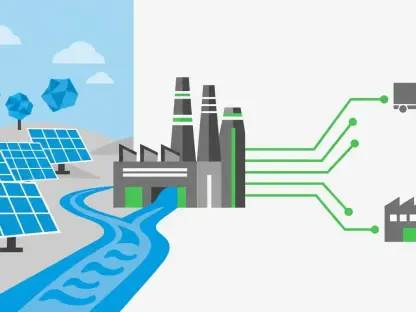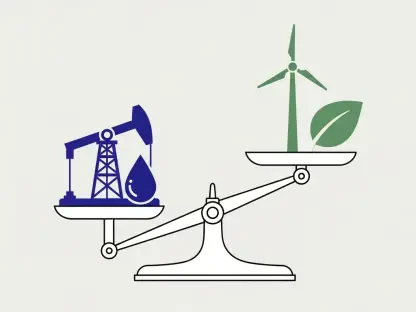Christopher Hailstone, with his substantial experience in energy management and renewable technologies, shares valuable insights into two innovative solar fuel projects, SUN-PERFORM and Solar to Butanol (S2B). These initiatives, backed by significant European Commission funding, aim to drastically improve solar-to-fuel conversion efficiency and support sectors where traditional renewable solutions have been less effective.
Can you explain the significance of the €8m funding received from the European Commission?
This funding is a major endorsement from the European Commission, highlighting the importance and potential impact of these projects. The €8m will finance extensive research and development, enabling the creation of advanced bio-inspired solar fuel technologies. It’s a clear sign that the EU is serious about addressing climate change and investing in next-generation renewable energy solutions.
What are the primary goals of the SUN-PERFORM and Solar to Butanol (S2B) projects?
Both projects aim to develop scalable, efficient, and sustainable solar fuel technologies. SUN-PERFORM focuses on maximizing light conversion using biohybrid technologies, while S2B seeks to create advanced solid-state biosynthetic platforms for butanol production. Ultimately, these projects target sectors like aviation and shipping, which are challenging to electrify using conventional renewable energy solutions.
How will SUN-PERFORM maximize light conversion for solar fuel production?
SUN-PERFORM plans to use a combination of advanced nanocrystals and genetically engineered microalgae. The nanocrystals are designed to capture and convert light more effectively, while the microalgae are optimized to produce solar fuel. This approach aims to improve the efficiency of solar-to-fuel conversion by fourfold, making the process viable for large-scale industrial applications.
Can you describe the biohybrid technologies being developed in the SUN-PERFORM project?
These technologies integrate sophisticated nanocrystals with genetically modified microalgae. The nanocrystals enhance light absorption, while the microalgae are engineered to efficiently convert the captured light into fuel. This biohybrid system is innovative because it combines the best aspects of biological and synthetic processes to achieve high efficiency in solar fuel production.
What are the unique features of the Solar to Butanol project that distinguish it from traditional solar fuel technologies?
The S2B project stands out due to its use of solid-state photosynthetic biocatalysts and 3D-printed hybrid films. These biocatalysts efficiently convert solar energy and CO₂ into butanol, a drop-in fuel. By embedding photosynthetic cells in hydrogel-based materials, S2B creates sustainable bioproduction platforms that offer long-lived, efficient, and scalable solar-to-fuel conversion.
How does the S2B project intend to utilize genetically engineered photosynthetic microbes?
The project leverages genetically engineered microbes that can convert CO₂ and solar energy directly into butanol. These microorganisms are embedded in solid-state systems that stabilize and enhance their productivity. This approach aims to make the bio-production process not only more efficient but also economically viable and scalable for industrial use.
What are the main bio-inspired approaches being utilized in both projects?
Both projects draw inspiration from natural photosynthesis but aim to surpass its efficiency using advanced technologies. SUN-PERFORM employs nanocrystals to optimize light capture and genetically modified microalgae for efficient fuel conversion. In contrast, S2B focuses on developing solid-state photosynthetic systems and hybrid films to achieve high yields of butanol from solar energy and CO₂.
How do the genetically engineered microalgae in SUN-PERFORM optimize solar fuel production?
These microalgae are engineered to enhance their photosynthetic efficiency and fuel production capabilities. By tweaking their genetic makeup, scientists aim to boost the microalgae’s ability to convert captured light into fuel, thereby increasing the overall efficiency and output of the SUN-PERFORM system.
Can you elaborate on the 3D printing technique used for creating hybrid films in the S2B project?
The S2B project uses 3D printing to create functional hydrogel-based materials that house photosynthetic cells. This technique allows precise control over the structure and composition of the films, optimizing them for light capture and efficiency. These hybrid films form the core of the solid-state bioproduction platforms, enhancing the stability and productivity of the embedded cells.
What are the anticipated benefits of improving solar-to-fuel conversion efficiency by fourfold in the SUN-PERFORM project?
Achieving a fourfold increase in conversion efficiency would make solar fuel production significantly more viable for industrial applications. It means lower costs, higher output, and greater scalability, making it possible to meet the high energy demands of sectors like aviation and shipping more sustainably and economically.
How will S2B’s approach to CO₂ fixation and light-to-fuel conversion enhance the efficiency of solar fuel production?
By using solid-state systems and 3D-printed hybrid films, S2B aims to stabilize and optimize the photosynthetic process. This approach increases the efficiency of CO₂ fixation and light conversion, leading to higher yields of butanol. Efficiently turning sunlight and CO₂ into fuel can significantly reduce carbon emissions and provide a sustainable energy source.
What significance do the demonstration results expected by 2028 hold for these projects?
These results will be pivotal in proving the viability and scalability of the technologies developed. Successful demonstrations could pave the way for commercial adoption and further development, bringing us closer to a fossil-free future. They will also provide key data and insights that can guide future research and optimization efforts.
How do these projects contribute to the EU’s vision for a fossil-free future?
By focusing on sectors that are difficult to electrify, like aviation and maritime shipping, these projects address critical areas where renewable solutions are needed most. They support the EU’s goals for reducing carbon emissions and transitioning to sustainable energy, aligning with the broader vision of a fossil-free, climate-neutral Europe.
What measures are being taken to ensure the scalability and economic viability of these technologies?
Both projects are designed with scalability in mind. They aim to develop not only efficient but also cost-effective solutions that can be integrated into existing energy systems. The use of advanced materials and bioengineering techniques ensures that the technologies can be scaled up without prohibitive costs, making them viable for widespread industrial use.
How can the lipids produced by SUN-PERFORM be converted into biodiesel or sustainable aviation fuels?
The lipids, primarily triacylglycerols (TAGs), can be processed through established industrial methods to create biodiesel or sustainable aviation fuels. These conversion processes are well-known and widely used, allowing the fuels to be seamlessly integrated into existing fuel supply chains and infrastructure.
What are the main challenges faced in producing sustainable fuel alternatives for hard-to-electrify sectors like aviation and maritime shipping?
The primary challenges include achieving high efficiency and scalability, ensuring the economic viability of the technologies, and integrating them into existing infrastructure. These sectors have high energy demands and require fuels that meet stringent performance criteria, making the development of suitable alternatives complex and demanding.
How will cross-border collaboration in these projects advance the transition to sustainable solar-driven fuels?
Cross-border collaboration brings together diverse expertise, resources, and perspectives, enhancing the innovation and development process. It enables the pooling of knowledge from different regions and disciplines, fostering a more comprehensive approach to solving the challenges of solar fuel production and accelerating the transition to sustainable energy.
What are the long-term goals for these projects beyond the initial four-year period?
Beyond the initial period, the long-term goals include further optimization of the technologies, scaling up production, and achieving commercial viability. The projects aim to continue improving efficiency and reducing costs, ultimately establishing solar fuels as a mainstream energy source that can significantly contribute to global carbon reduction efforts.
Do you have any advice for our readers?
Investing in renewable energy technologies is crucial for our sustainable future. Stay informed about advances in the field, support policies promoting clean energy, and consider how you can contribute to a greener world through your daily actions and choices.









